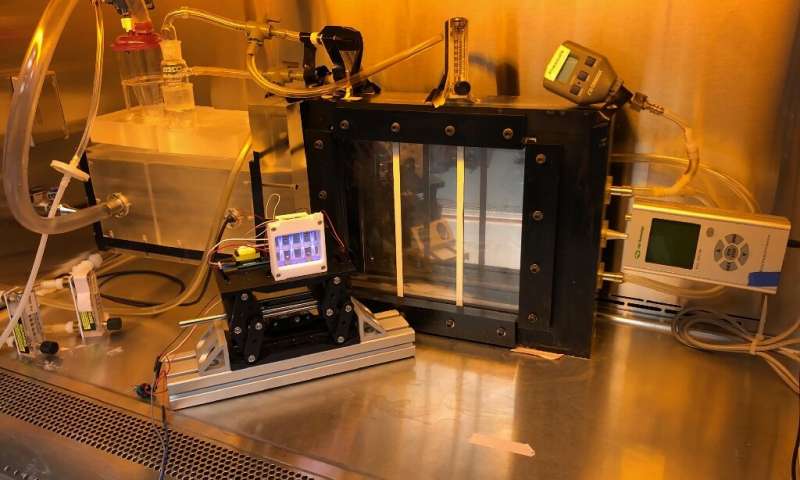
UV light is a proven technology when it comes to reducing bacteria, viruses and other harmful microorganisms that pose a risk to human health. Ultraviolet (UV-C) light is germicidal because it kills or inactivates microorganisms with its short wavelength by destroying nucleic acids and disrupting their DNA, leaving them unable to perform vital cellular functions. In addition, oxygen can also absorb energy from UV light to form ozone for disinfection.
For many years, UV germicidal lamps have been widely used for disinfection of air and surfaces within hospitals, care homes, laboratories and any organisation where hygiene and cleanliness are of utmost importance.
According to current understanding, UV light with an irradiation wavelength of 200-280nm is most germicidal with best results seen at around 254nm. For different microorganisms, the effect of UV light varies. Studies have been carried out (see further on) using far-UV which is safer but not as effective.
In light of the current Coronavirus (SARS-CoV-2 or Covid-19) when the whole world is fighting against the coronavirus outbreak, virus-killing UV-C is a practical solution for reducing and preventing the spread of infection – not just on surfaces but now also in the air that we breathe. According to The Royal London Hospital there is an urgent requirement to implement Active Air Sterilisation to reduce aerosolised pathogens in theatres, wards and other areas (Dr Michael Cunningham, RLH. Michael Jemmot, Skanska [RLH Facilities]).
The novel coronavirus is a kind of positive-sense single-stranded RNV virus, same as the SARS and MERS virus. Research on SARS found that this kind of virus is sensitive to heat radiation and UV-C light and can be diminished when exposure to UVC irradiation is stronger than 90 μW/cm2. Thus, as Covid-19 is of the same type of virus, UV-C at the above irradiation wavelength will be able to destroy the virus.
UV-C at this irradiation wavelength is a health hazard to the eyes and skin and it should on no occasion be randomly or deliberately exposed to healthy living organisms – including humans. So, you might ask how can it be safely deployed to sterilise room air?
Careful consideration must be given to the design of such equipment to ensure no harmful radiation escapes the housing yet still maintain high efficacy. By putting the source of the UV-C inside an air sterilisation unit there is zero risk. Air is drawn in through side inlets, exposed to very powerful UV-C (recommended 147 μW/cm2) @ 253.7nm) inside the chamber before being expelled back into the room via a front outlet.
There are many products on the market utilising different technologies but the most efficient unit we have seen is the Viralair-UV™ mobile plug-and-play units offered by TION. It appeals to a wide-range of sectors and professions and is proving popular due to its high capacity, robust construction, simple design, compact casing and highly competitive price.
For corroboration of UV-C efficacy against Covid-19 (albeit at lower power UV-C) please refer to a very recent in-depth study that was published on the 27th April 2020 by Columbia University – see below:
Far-UVC light efficiently and safely inactivates airborne human coronaviruses
Tests show UVC lamps could light the way in virus fight
Alternatively, to find out more, contact our team.
Read our Privacy Policy for more information on how we collect and process data.



No thank you
Read our Privacy Policy for more information on how we collect and process data.